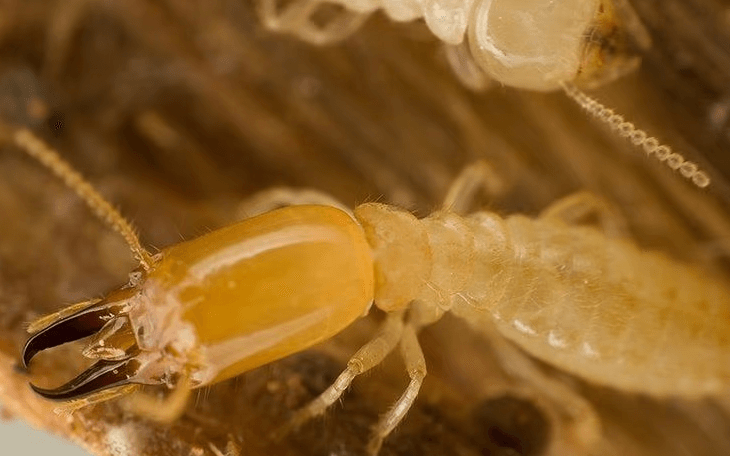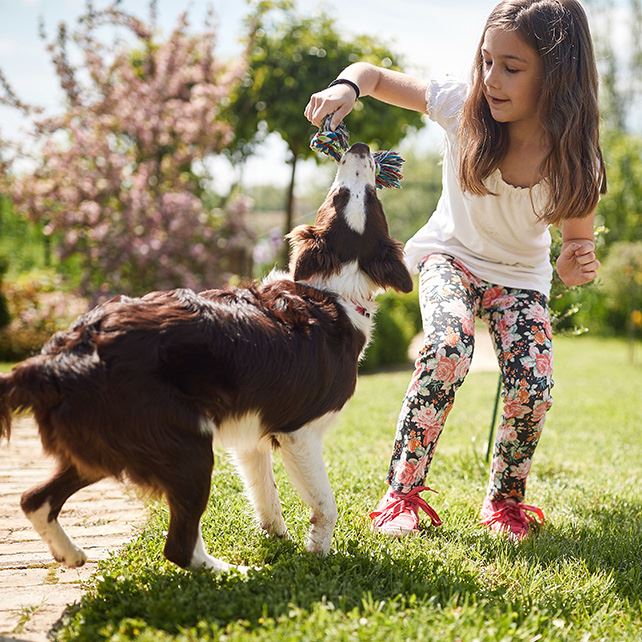
Subterranean Termite Identification & Prevention In Nassau & Suffolk County, NY
What do subterranean termites look like?
Latin name: Reticulitermes spp., Coptotermes spp., and Heterotermes spp.
Termites are broadly divided into three major termite groups:
- Subterranean
- Drywood
- Dampwood
If you are trying to classify a specific termite colony into a group, you need to look at the soldiers and the alates, the winged, unmated reproductive caste, because worker termites across groups tend to look the same. Also important is the appearance of the damage wood they consume.
Identification factors for subterranean termites are:
Alates (swarmers): Dark-brown to black in color, about ¼ to ½ inch long with two pairs of wings that are very close to being equal in length.
Workers: No wings, about ¼ inch or less in length and cream colored.
Soldiers: No wings, large mandibles (jaws), termite colony defenders, are creamy-white in color, but their head is often brownish in color.
Appearance of damaged wood: Since subterranean termites build their nests underground, damaged wood usually has an accumulation of soil or mud within the tunnels of the wood they are eating. Since subterranean termites only eat the softwood, damaged wood appears to be layered, the result of the workers not eating the hardwood portion. In addition, subterranean termites feed “with the grain” rather than across the grain, as do drywood termites.
Location of the nest: As their group name suggests, the nest is usually found below ground. Nests may be found above ground, but only when sufficient moisture conditions are available to support the above-ground nest and the colony is old and well established.

How did I get subterranean termites?
These pests live in the soil beneath and around homes and often enter through wood that touches the ground or by constructing mud tubes from the ground to the wood they infest. Cracks in concrete walls and foundations made of hollow blocks are also paths these insects could take to infest a house.
How serious are subterranean termites?
As the most common type of termite nationwide, subterranean termites cause billions of dollars in structural damage each year. They also eat books, other paper products, cellulose-based products, and a variety of other plant-based goods.
Some colonies have more than one egg-laying female, so subterranean termite nests can grow quickly and contain hundreds and sometimes thousands of members. Since the pests can often infest homes for years undetected, responding to early warning signs is key to preventing serious damage. The most commonly observed warning signs are the presence of winged swarmers, mud tubes and evidence of damaged wood.
How do I get rid of subterranean termites?
Continuous Treatment Plans
With All State Pest Control, you receive the most dependable termite control from an industry leader. Our Continuous Protection Plans use scientifically proven treatments designed for your home’s construction type, and every one of those treatments is backed by a money-back guarantee. We’ve been around for more than 100 years, so you can be confident we’ll be here when you need us.
Customized treatment
Based on the layout of your home and the degree of termite infestation, All State Pest Control will create a treatment plan tailored for your home.

Reasons to Choose All State Pest Control
-
Hablamos EspañolPest control services provided by a Spanish-speaking team.
-
Emergency Services AvailableGet the immediate help you need, whenever you need it.
-
100% Satisfaction GuaranteeWe're so confident you'll be happy with our services, we guarantee it.
-
Offering 100% Free QuotesGet started by giving us a call and setting up a free estimate.
What are the signs of a subterranean termite infestation?
Swarmers
A subterranean termite infestation begins when warm temperatures and heavy rainfall trigger an established colony to send out a swarm of winged termites. Swarms consist of winged reproductive males and females. Subterranean termite colonies are usually active for three to five years before winged reproductives appear.
Winged, reproductive termites are frequently mistaken for flying ants, but are smaller than ants and have straight, rather than bent, antennae. Termite swarmers have four wings that are all the same size. Ant swarmers have two large wings in front and two smaller wings behind.
Piles of Wings
After mating, swarmer termites land and shed their wings, leaving them in piles that resemble fish scales. If there are piles of wings on windowsills of your home, check to see if they are all the same size. They could be termite wings especially if they are all the same size.
Damaged Wood
Subterranean termites create a distinctive honeycomb pattern in damaged wood, forming tunnels inside the softer spring wood and leaving the external grain intact.

Hear From Our Happy Customers
At All State Pest Control, your satisfaction is our priority! See for yourself what people have to say about working with us.
-
“I highly recommend this business as they are very professional and reasonably priced.”- Stray C.
-
“The job was very thorough, very reasonably priced and Tom was very professional.”- Patrick M.
-
“So happy we used this company and will be using them again! Great work great owner and great service.”- Stefani J.
-
“For bringing them so much work they occasionally offer us free treatments and that is just good business!”- Derek B.
Where do subterranean termites live?
Live in colonies underground, from which they build tunnels in search of food; able to reach food above the ground level by building mud tubes; dependent on moisture for survival.
What do subterranean termites eat?
Diet consists of wood and other cellulose material.



